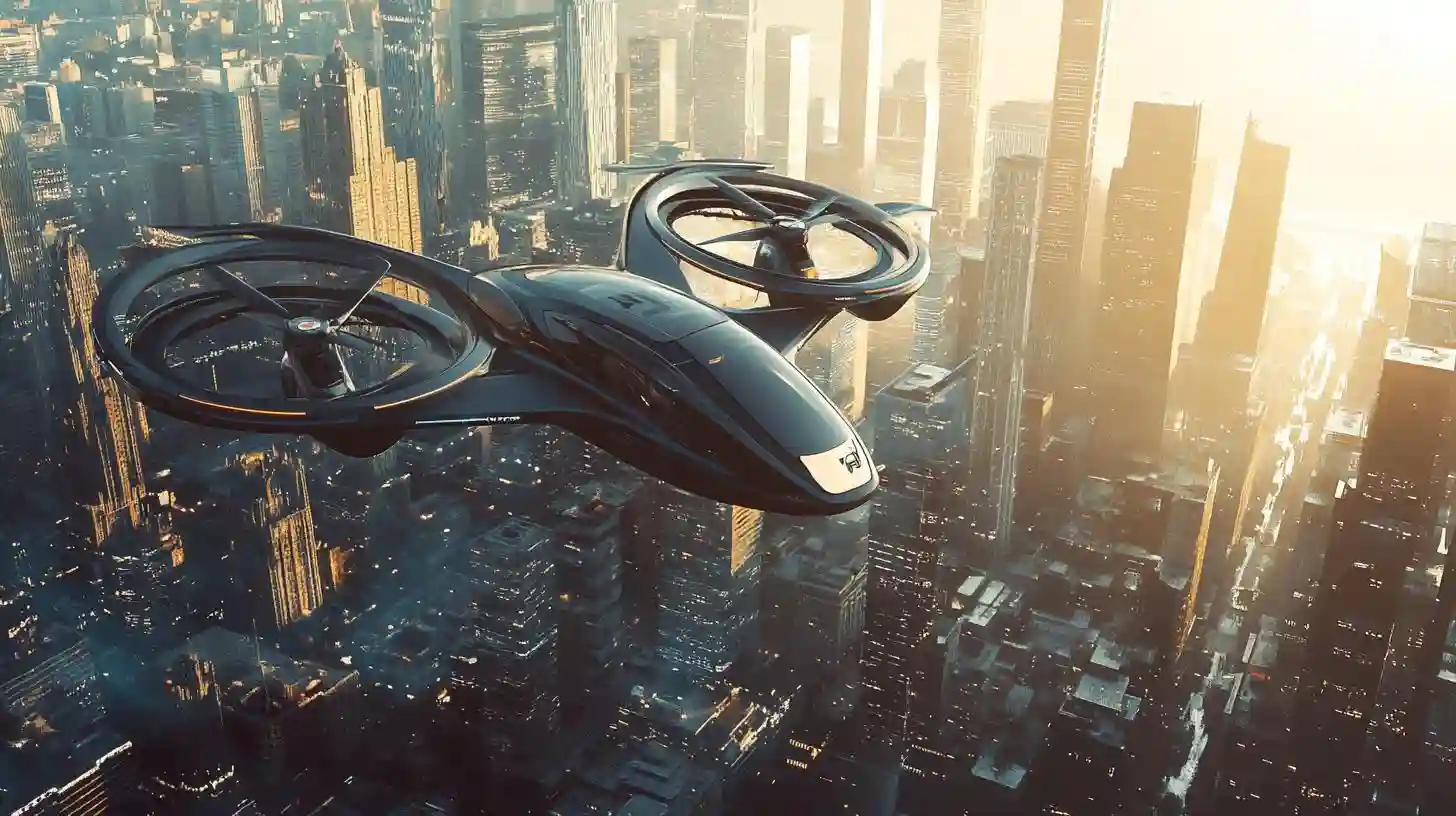
Knowledgetrovehq

The emergence of electric flying taxis presents an exciting frontier in urban transportation that promises to reshape our cities and the way we navigate through them. With rapid technological advancements and a growing emphasis on sustainability, the vision of flying cars has transitioned from a science fiction dream to a plausible reality. This innovation could alleviate the persistent issues of traffic congestion, pollution, and urban sprawl that plague modern metropolises. However, the deployment of these aerial vehicles comes laden with a multitude of challenges that need careful consideration.
One of the core advantages of electric flying taxis is their potential to significantly reduce roadway traffic. Traditional urban transportation systems are burdened by an ever-increasing number of vehicles, leading to gridlock and longer commute times. By working in three-dimensional space, flying taxis can bypass ground-level congestion, allowing for more direct and efficient travel routes. Furthermore, the integration of air taxis into existing transportation networks could provide seamless connections from airports to city centers, reducing the time it takes for passengers to reach their destinations.
The sustainability of electric flying taxis is another compelling benefit. As cities around the world grapple with the impacts of climate change and air pollution, electric vehicles represent a gradual shift towards cleaner transportation solutions. Unlike conventional helicopters or planes that typically rely on fossil fuels, electric aerial vehicles promise to operate with zero emissions during flight. This transition is crucial for urban areas where air quality has become increasingly deteriorated, posing health risks to residents. Even though the manufacturing and power supply aspects of electric flying taxis may raise environmental concerns, the immediate operational benefits could still contribute to a greener urban landscape.
Safety considerations are paramount in the deployment of electric flying taxis, and they present a significant challenge. The vertical takeoff and landing capabilities of these vehicles necessitate a complete overhaul of our existing aviation safety regulations and infrastructure. Integrating flying taxis into already busy urban airspace raises questions about air traffic control, collision avoidance systems, and protocols for emergency situations. There is a need for robust technology that ensures the safety of passengers, pedestrians, and people on the ground. Establishing trust in this new mode of transportation will be essential for widespread adoption.
Infrastructure also plays a critical role in the success of electric flying taxis. Unlike traditional taxis, which rely on established road networks, flying taxis will require new urban designs featuring vertiports for take-off and landing. These hubs must be strategically placed throughout cities for maximum efficiency, raising logistical and zoning challenges. Cities will need to assess their spatial requirements and available land, often in densely populated areas where real estate is already a contentious issue. Adapting existing structures, such as rooftop helipads or repurposing parking areas, could offer some solutions, but urban planning must evolve to accommodate these innovations.
Public perception and acceptance pose additional hurdles to the proliferation of electric flying taxis. This form of transport is still largely unfamiliar to the general populace, and education will be critical in gaining public trust. Concerns related to noise pollution, privacy, and the prospect of accidents can cultivate resistance among communities resistant to change. Engaging the public through outreach programs, trials, and demonstrations may help alleviate some fears and highlight the benefits of flying taxis. Transparency regarding safety protocols, regulatory measures, and operational practices can foster confidence in this transformative transportation method.
Technological advancements will drive the viability of electric flying taxis, but challenges pertaining to battery technology and range remain. Current electric battery systems must evolve to support longer ranges and faster charging times to make aerial taxis a practical choice for users. Research is ongoing to develop more efficient battery systems that can withstand the demanding performance requirements for urban air transport. The interplay between advancements in energy storage and the feasibility of air mobility will be a crucial factor influencing the timeline for adoption.
The regulatory landscape is yet another layer of complexity. Governments will need to establish frameworks that govern the operation of electric flying taxis, including certification processes, licensing requirements, and operational limitations. International cooperation may be necessary to standardize regulations and protocols, especially for routes that cross municipal or national boundaries. Regulation must strike a balance between fostering innovation and ensuring public safety while integrating these new vehicles into existing transport frameworks.
Electric flying taxis have the potential to revolutionize urban transportation, offering a glimpse into the future of mobility as we know it. While the promise of avoiding traffic jams and contributing to greener cities is tantalizing, many challenges lie ahead. Overcoming regulatory, infrastructural, and societal hurdles will be key to making flying taxis a commonplace mode of transport. As technology progresses and as stakeholders come together to address these multifaceted challenges, the vision of seamless aerial travel in our urban environments may soon take flight. The journey toward this new mode of transportation will undoubtedly evolve over time but holds the promise of reshaping the urban landscape for generations to come.